|
Implementing Sustainable Development in School Curricula GLE, Helsinki 03.July 1998 Dieter Gross, Guest of Honour in the first international GLOBE Learning Expedition, giving a presentation for the international conference participants as well as for Finnish representatives of the National Board of Education and Ministry of Education |
1. Reasons for Implementing Education for Sustainability in School Curricula
2. Reorienting Education and Requirements for ESD (Case Study: Geography and ESD)
3. A Curriculum Based on the Principle of SD
1. Reasons for Implementing Education for Sustainability in School Curricula [Analysis]
| Why are we striving for Education for Sustainability? Why do we need
more ESD than EE? How does the framework for education look like? Which are the substantial ideas of this concept? (Fig.1). |
To answer these questions we have to face the present and upcoming challenges. Thus we may find the goals the new millennium and the youth is waiting for. According to Mary Paden (WRI) , a forerunner in dealing with SD and education, sustainable development is still a tough new concept. Nonetheless there is a growing group of people talking about SD, unfortunately without consequences for those it is meant for. If there is going to be a global commitment to sustainability, it is paramount that the world’s youth and future leaders have the information and skills to understand the concept and feel inspired to achieve its goals.
ALTHOUGH there have been some minor efforts in implementing SD in the field of education but actually sustainable development concepts are still conspicuous by their absence.[1] Instead of focusing on nature and ecosystems only, as in EE, education for SD must encompass economic and social equity concerns and must take an international/global as well as local perspective.
|
Fig. 1 The framework in which educattional concepts of SD have to be implemented in
THE role of education for human sustainable development is to contribute to making this possible. Only education can give people the environmental and ethical awareness, values and attitudes, skills and behavior needed for sustainable development. To achieve this, education needs to explain not only the physical and biological environment, but the socio-economic environment and human development. To be effective it should deal with the dynamics of both and be integrated in all disciplines.
HOWEVER, many people do not understand the close ties between human activities and the environment because they have inaccurate or insufficient information or are not accustomed to systemic thinking and are not used to look ahead and deal with global outlooks.
Human beings and their environment are closely integrated within a system of mutual interaction and human activities are having impacts of planetary scale for the first time in history. The changes in the global environment are reshaping the relationship between humankind and the natural basis. This transformation process, called global change, involves many risks. It can only be understood if Earth is conceived as a single system and perceived holistically, where individual components are interrelated and affect the whole. Human interventions in that system, as manifested in the depletion of raw materials, changes to large-scale natural structures and critical stresses on environmental assets. Thus the investigation of the Earth System requires an integrative and systemic[2] approach.
At this stage of reporting we may already summarize and emphasize some relevant signpost for education for sustainable development.
[KEY CHARTACTERISTICS] 2. Human and environmental systems are systemic and reveal diversity in their relationship, they have to be integrated in all disciplines, predominantly by an interdisciplinary approach. 3. The Earth is a single system and has to be seen holistically. |
But there are some additional aspects which have to be regarded when ESD has to be implemented in school curricula , because they are of growing importance. Analyzing the present changes on the globe we have to accept that economic activities play a dominant role, because it is becoming more "globalized" and controversial, since it will be good for some, whereas others won't like it at all. They are afraid of being plundered of their values or being threatened by unemployment. Their thinking is dominated by 'Globaphobia'. To balance this out and find effective strategies the whole framework has to be analyzed extensively.
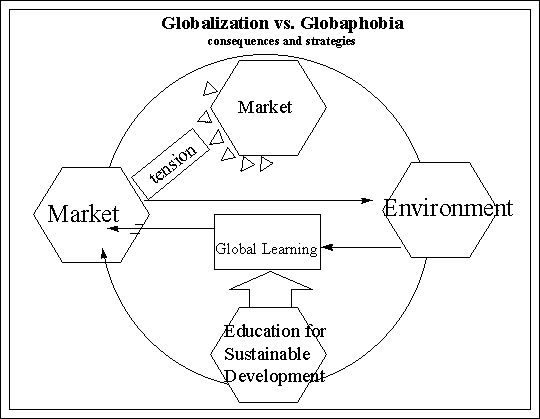
Fig. 2 Globalization vs. Globaphobia
Which are the key characteristics of economic globalization [3] and which of them are relevant for education and have to be transferred into ESD ?
· Globalization can be thought of as a process in which economic markets, technologies, and communication generate a variety of consequences and gradually exhibit more "global" characteristics, and less "national" or "local" ones.
· Globalization will generate additional economic growth (scale effects) and shifts in the composition and location of production and consumption activities (structural effects). This will naturally be of concern to national governments in those countries where particular firms or industries might suffer economic declines as a result of globalization. Thus, the way in which competition and competitiveness may be affected by globalization will be of prime interest.
· Globalization will also reduce the ability of national governments to act unilaterally. Not only will the decisions of individual governments have less impact on the world economy, there will also be increased pressure on governments where disruptions in job security are already generating considerable debate about the effects of globalization on employment prospects. This may also generate social tensions in the process, as these changes begin to affect specific individuals or groups. Those affected will often perceive the costs of these changes more readily than they do the benefits. Life in the global economy will be full of uncertainty.
The reaction on globalization is increasingly manifested as a break within people's awareness, because you are not trained to think holistically or to think globally either, so there is an uprising of new regionalism and even nationalism.[4] Having in mind the present state of public awareness Jacques Delors has revealed these inner conflicts and dilemmas by headlining one of his lectures on education for the twenty-first century: "Mastering Globalization, Keeping Roots" [5]. To accomplish this within education, reformers should bring to life the foundations of education: learning to live together, learning to know, learning to do, and learning to be ( four pillars).
When global issues and the challenges of globalization have to be handled in intergene-rational responsibility, learning to live together will be indispensable. According to Delors this means more than tolerating otherness, namely to live together in mutual respect. "If we wish, through education, to learn to live together, we must reflect on the way in which history, geography, languages, philosophy are taught." These ideas are accepted and supported especially in those countries where globalization is understood as an opportunity to reorient policy in general and development in particular with regard for attaining a viable future,
What does this mean for education, when globalization and internationalization of the economy demand an intensive use of human resources (knowledge), because competitiveness is asked for in a global scale? And when those economic forces which cling to local or national regions solely, will culturally be fossilized, those however who are directed to new frontiers will succeed? And when the individual is confronted with changed societal and political structures where governments return responsibility(by making it again a private matter), because they are no longer prepared to manage them in the face of overboarding masses of internationalized problems?
This means for education that it has to be reoriented [6], although up to now education in relation to sustainable development still remains fragmented and progress in this field can only be described as modest [7] . But schools must face that the individual has to accept more responsibility with regard to local and global aspects, focused on the principle of sustainability. And decisions have to be based on global and individual values as well on activities which are characterized by intergenerational and intra-generational responsibility. And what is concerning 'knowledge', students will be asked to make more use of target knowledge about the targets of future development and scenarios than of systems knowledge solely. This concept will have broad implications for curricula at all levels of education. To clarify the conditions of implementing ESD even more, we will have a closer look at 'environmental globalization' too.
Which are the key characteristics of global scale issues and which strategies within education are necessary for problem-solving?
To understand the phenomena of Global Change it is essential to consider various spatial and temporal dimensions as well as their interactions. This requires an analysis of both the interactions between short and long-term processes, and the connections between local and global phenomena, and of individuals and society. However little attention [8] has been up to now paid to the fact that, owing to globalization, social processes are beginning to become completely dissociated from space and time. As a consequence, interactions between individual actions and their impacts can no longer be immediately experienced; hence responsibility is reduced. Non-sustainable actions dissociated from local and/or regional conditions are being encouraged. This is an issue where the GLOBE program may really help, namely to re-associate space and time and to connect local and global issues.
Anthropogenic climate change is a good example (German Advisory Council on Global Change, 1996) for making aware of the sheer dimensions of human-induced effects on the global environment and the dissociation from space and time. Carbon dioxide emissions from transport in Germany contribute towards rising sea level and the expected disappearance of coral islands 20,000 km away, thus robbing the inhabitants of such islands of their very habitat. Humankind is thus confronted not only with a major ethical dilemma, but also with a complex of difficult research issues and problems which have to be resolved as quickly and as competently as possible. These problems can only be solved by interdisciplinary and international research networks.
The solution of global environmental problems therefore requires a reorientation of our entire society and our educational system towards sustainability, where economic, environmental and societal aspects are not regarded sectorally but as a complex process. But there is another problem: it is often impossible to make precise predictions concerning the development of coupled systems, and responses to their changes are usually not as precise as those for narrow fields.( i. e. teaching will increasingly cling to uncertainties in the future). And society has perceptual problems when handling uncertainty; its usual consequence is inaction. This we have also to keep in mind when we are trying to implement the principle of ESD in curricula. This means: understanding coupled systems requires a broad approach to research and education which focuses on interactions, variability, problems of scale and proportions, and system properties Again a tremendous job for GLOBE.
Having analyzed current developments of a globalized economy and changing local circumstances, we may finally encircle the key characteristics of an education for sustainability.
Education for sustainability will be a lifelong learning process affirming values and actions which contribute to human and social transformation and ecological preservation. This requires individual and collective responsibility at the local, national and planetary levels. Coping with these problems and preparing ourselves for the required changes depends on understanding the systemic nature of present and future crises. Behavioral changes of this extent will help to ensure economic development, environmental responsibility and social stability. |
Education for sustainability will be a lifelong learning process affirming values and actions which contribute to human and social transformation and ecological preservation. This requires individual and collective responsibility at the local, national and planetary levels. Coping with these problems and preparing ourselves for the required changes depends on understanding the systemic nature of present and future crises. Behavioral changes of this extent will help to ensure economic development, environmental responsibility and social stability.
2. Reorienting Education and Requirements for ESD (Case Study: Geography and ESD) [CONSEQUENCES AND METHODS ]
Next I'll like to give an insight into some requirements which will be necessary to implement education for sustainability in education and teaching. Since I don't like to take up too much of your time I'll concentrate on two methodological ways: systems thinking and global perspectives. In order to make this more comprehensible both will be looked at with a geographer's perspective. This will also help to explain the new relevance of geography for society. [9]
Firstly: Systems thinking
The interwoven nature of environmental problems demands systems thinking which synthesizes and evaluates linkages. Systems thinking fosters problem solving, conflict resolution, consensus building, interpersonal experience and critical and creative thinking. All this is needed to become aware of the global implications of economic decisions. Incidentally these requirements offer an exemplary vehicle for developing and exercising many of these skills which are increasingly sought by employers. This makes also comprehensible why an increasing number of politicians are so extremely interested in promoting education for sustainability and why economy and education are approaching each other. They know that politics have ceased determining market globalization, as I have mentioned before, and that the traditional-style economic policy in some OECD countries will only be overcome by a structural change. Thus they feel wholly dependent on this new thinking when striving for global competitiveness.
Secondly: Global perspectives
Achieving sustainability is also dependent on an understanding of different cultures and multiperspective approaches to problem solving. Globalization will face you with diverse cultures and asks for intercultural communication. Consequently you must have knowledge and an understanding of the Earth. Many environmental challenges, such as climate change, migration, loss of biodiversity, are local in nature but responses must be global. That means you always have to deal with a different variables, e.g. different cultures in different locations and sustainability in the rain forest means something different than sustainability in a temperate forest.(Fig. 3)
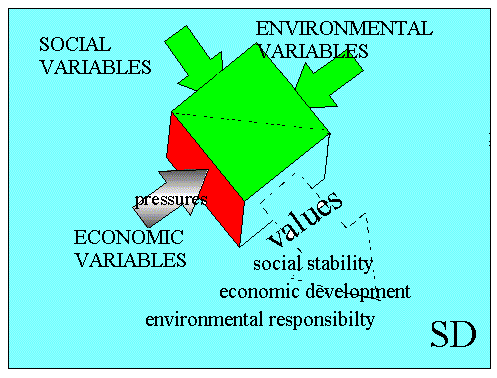
Fig. 3 Local variabilities and values will generate diffrent strategies for achieving sustainabilty
Geographers seek to understand how developments in one place influence those in other places or do not: for example, the flows of peoples, goods, and ideas that reinforce differentiation or enhance similarities. In other words, geographers study both the "vertical" integration of characteristics that define place and the "horizontal" connections between places.
Summing this up, we may use Geography and its way of looking at the world as a means [10] for illustrating those strategies which are necessary for implementing the principle of sustainability: reflecting the systemic nature of the world, integrating economic pressures as well as environmental and social impacts and focusing on location which provides a cross-cutting way of looking at processes and phenomena. The study of these relationships has enabled geographers to pay attention to complexities of places and processes and give support for applying the appropriate strategy (ecozone, culture, values etc.)
The study of human society and the environment through the perspectives of place, space and scale is obviously finding increased relevance in fields ranging from ecology to economics. This is the reason why the discipline of geography has been undergoing a renaissance in the United States during the past decade. There is a growing perception that geography has been a leader in understanding spatial interactions, a subject of interest to both science and society.
On Earth Day 1997, Ms. Albright; Secretary of State, issued the State Department’s first annual report on "Environmental Diplomacy: the Environment and U.S. Foreign Policy." In it, Secretary Albright asserted that global environmental damage "threatens the health of the American people and the future of our economy" and that "environmental problems are often at the heart of the political and economic challenges we face around the world." The Report deals with issues such as these: "Water Scarcity in River Basins as a Security Problem" OR "U.S.-Mexico Case Study on Desertification and Migration"
And some months ago the World Bank has published two papers which have
tried to explore the extent to which geographical conditions affect the economic
development prospects of national economies: Geography and Economic Growth (John Gallup
& Jeffrey Sachs) and The Role of Geography in Development (Paul Krugman) 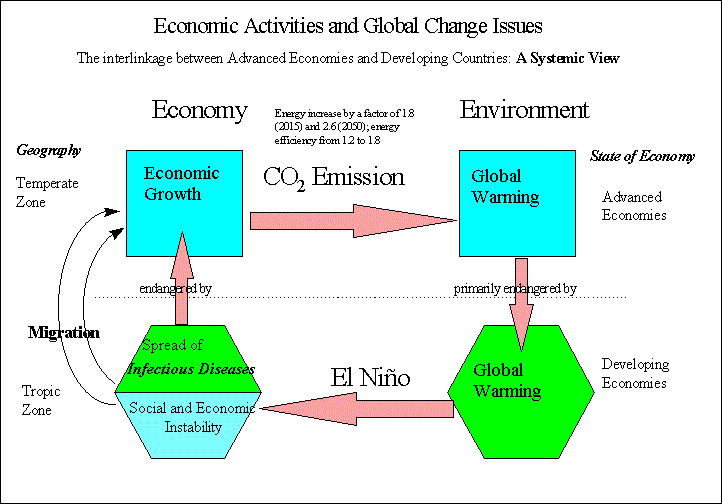
Fig. 4 Economic Activities and Global Change Issues - A Systemic View
To offer evidence of the new relevance of geography I'll deal with the relationship between Economic Activities and Global Change Issues , hereby focusing upon the greenhouse effect or on global warming. Fig. 4
Among other things the economic variables are influenced by the use of energy. The present figures show that the consumption of energy will rise and this will have effects on global warming [11]. According to Pearce and Warford the impact of climatic change on developing countries could be substantial. First, "developing economies tend to be more dependent than industrial economies on natural resources, which themselves are sensitive to fairly moderate changes in climate: soil quality, woody biomass, and water for drinking and as a habitat for fish. Second, the agricultural systems of many developing countries are based on low-lying deltaic land fed by rich silt from river systems. These lands will be prone to flooding and the intrusion of saltwater. Third, many agricultural systems rely on natural rainfall rather than irrigation systems. Not only does the amount of rain matter, but so do the timing and distribution of rain across the growing season. Third, many small developing countries are island communities at special risk from severe weather events such as hurricanes and cyclones. Fourth, the very poverty of many developing countries will preclude them from undertaking the kinds of adaptive policies, such as sea defenses, that may be needed."
Furthermore global warming will cause severe changes in the tropic zone, e.g. a spread of infectious diseases which will be accompanied by economic and social instability. This will result in migration into northern regions. World Resources Report 1998 -99 has just published a special report on that: Environmental Change and Human Health.
I think that this example demonstrates quite clearly the systemic nature of global scale issues. The interlinkage between advanced economies and developing countries, the interdependencies between human and environmental systems as well as the connections between ecozones and shows to which extent geography supports this holistic approach.
The approach I have just presented by making predominantly use of geography's way of looking at the world meets completely with that of the NAAEE [12] and corresponds with their guidelines for implementing sustainable development in education, in addition to those already mentioned before ( systems thinking, global perspectives)
[KEY CHARACTERISTICS] ¨ A balanced presentation of viewpoints, ¨ Reflecting of diversity (different cultures, races, genders, social groups) ¨ Environmental issues should be explored by using a variety of scales, short to long time spaces, localized to global effects, local to international community levels and curricula should promote intergenerational and global responsibility.
3. A Curriculum Based on the Principle of SD [STRATEGY]
To restructure or reorient curricula for SD you have to use a didactic system that is related to the interconnectivity of social, environmental, and economic systems. In 1994 German geographers have developed a curriculum for the Federal Environmental Agency of Germany within a R& D project , which shows these characteristics. It deals with "Europe" and is offering a model how to implement the principle of sustainability. Europe has been chosen, because it strives for integrating economic, environmental and social issues, the same goals which sustainable development is dependent on. But unfortunately these issues are still separately seen in Europe. On the other hand Europe has something which is of substantial support for implementing SD in curricula, because it can be accepted by many: the people of Europe share a common cultural ground where values are a decisive part of. A curriculum based on the principle of sustainable development must rely on value-oriented objectives.
First we have to make use of a decision-making structure (Fig. 5) where
conflicting issues are openly presented. Next you will perceive these different dimensions
(the socio-economic and the geo-ecological) multi-perspectively, that means you will look
at the involved parts simultaneously and equally, you will move between different scales
(local and global) and you have to make up your mind to follow your individual interests
or 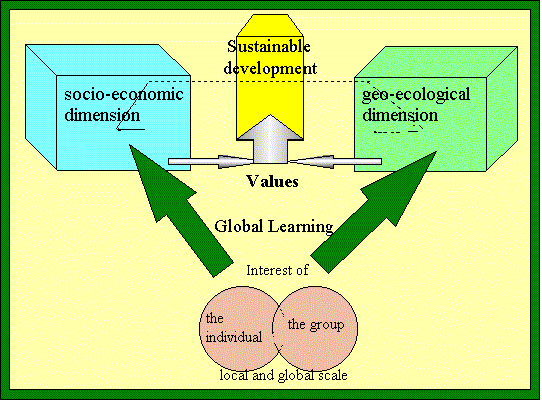
Fig. 5 Decision-making structure for implementing ESD
those of a group. In balancing out these conflicts you are completely dependent on values in order to come to responsible decisions, otherwise you will be lost in space. And finally you are substantially dependent on this new thinking ( e.g. integrative and holistic thinking etc., Fig. 7) as well as on an extensive knowledge and understanding of the systemic nature of the Earth.
Referring to the paragraph "industry and services" within the
curriculum, I like to explain the approach by the following graphs (Fig. 6) 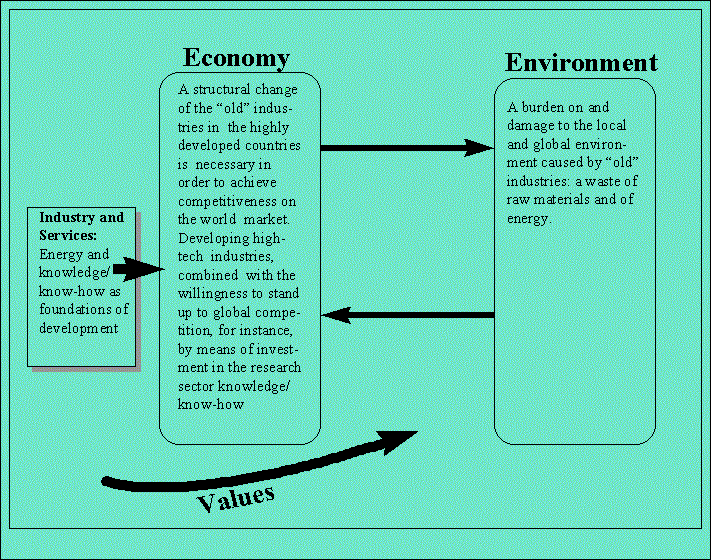
Fig. 6.1 A Curriculum based on the Principle of SD - "EUROPE"
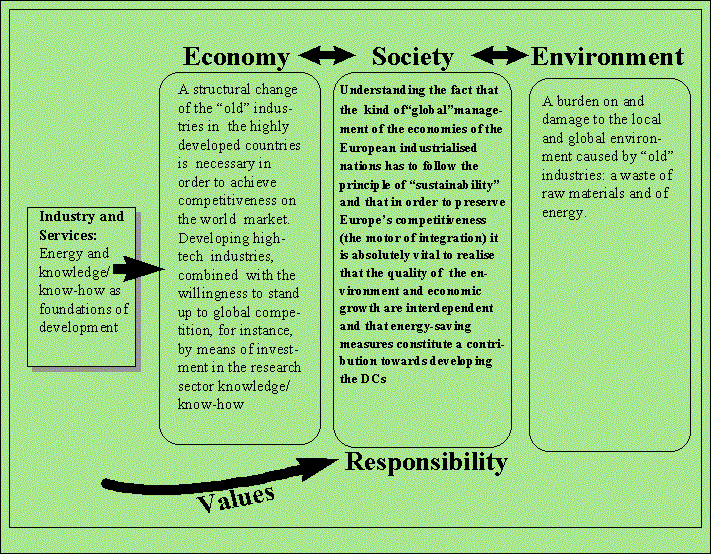
Fig. 6.2 A Curriculum based on the Principle of SD - "EUROPE"
Endnotes:
1. Even Environmental Education is to some extent a "1% discipline" (de Haan, 1995); from a quantitative perspective, German pupils receive no more than eight hours of environmental education per school year on average. IN: Sustainable Germany - towards an environmental sound development. Federal Environmental Agency (Umweltbundesamt) of Germany, 1997, p.212
2. AN EXAMPLE OF THE SYSTEMIC CHARACTER BETWEEN MAN AND NATURE: natural areas and the biodiversity they contain are diminishing due to the expansion of agricultural land and human settlements. In a conventional development scenario agricultural land increases from one-third to almost one-half of the earth's land mass by 2050. This increase is concentrated in tropical and subtropical zone. The remaining natural areas are formed to a large extent by mountainous, boreal, subpolar, arid and semi-arid lands, which are less suitable for human settlement. Simultaneously, these remaining natural areas will be under increasing pressure from population growth, economic development and associated environmental stresses such as climate change. Consequently, biodiversity will be severely affected in the scenario, both in terms of quantity and quality. RIVM/UNEP 1997, Bakkes, J. A. and J.W. van Woerden (eds.). The Future of the Global Environment. A model-based Analysis Supporting UNEP's First Global Environment Outlook. National Institute of Public Health and the Environment (RIVM)
3. ECONOMIC GLOBALISATION AND THE ENVIRONMENT , C/MIN 97/13, OECD
4.We have to admit that the number of states has increased instead of decreasing what actually should follow by globalization
5.Delors J., Learning throughout Life. Mastering Globalization, Keeping Roots. The Message of the Report of the International Commission on Education for the Twenty-first Century, Kristianborg, 1996
6. Chapter 36 of the Agenda 21, though the concentration of the chapter is on environment and development education and this is not the same thing.
7.Rio+5 Special Focus Reports - Social Development
8.Research on Sustainability and Global Change - Visions in Science Policy by Swiss Researchers , 1997 Pro Clim- Forum for Climate and Global Change , Swiss Academy of Sciences SAS
9.Rediscovering Geography :New Relevance for Science and Society, National Research Council, Washington, D.C. 1997
10.Geography's traditional interest in integrating phenomena and processes in particular places, for example, has a new relevance in science today, in connection with the search for what some have called a "science of complexity"
11.David W. Pearce and Jeremy J. Warford: World Without End. Economics, Environment and Sustainable Development; changes in average regional temperature and rainfall, average rise in sea level, and frequency and severity of weather events.
12.Environmental Education Materials: Guidelines for Excellence, North American Association for Environmental Education ( NAAEE), 1996
Dieter Gross
mailto: Dieter.Gross@t-online.de